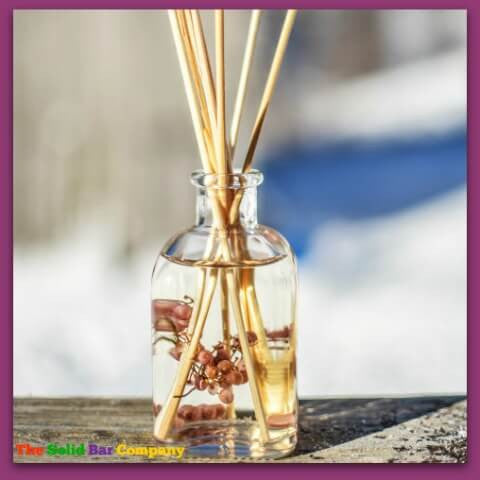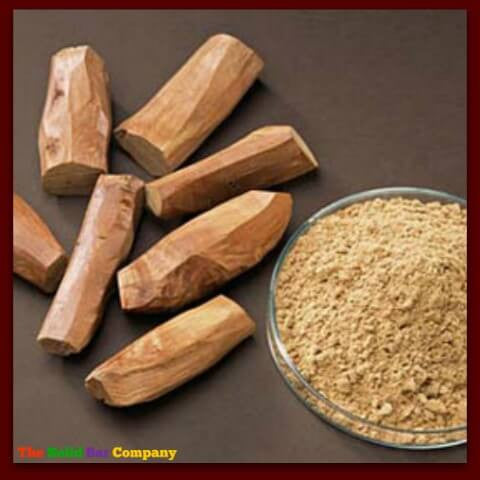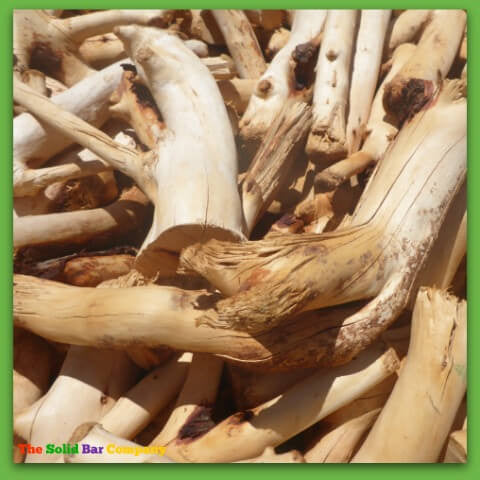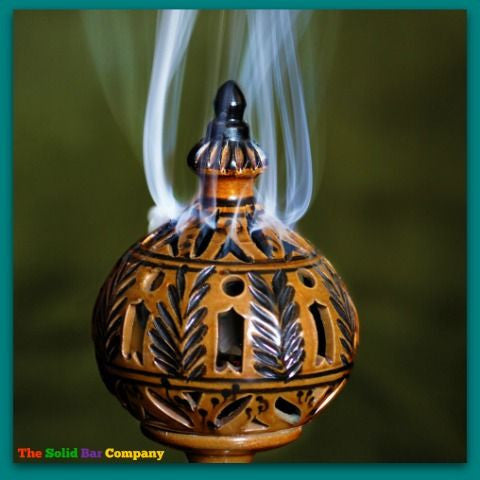*** FREE Shipping On All Orders Over £35! ***
*** FREE Shipping On All Orders Over £35! ***
The Super Scent of Sandalwood!
November 08, 2018 3 min read

Why is there such an attraction to the scent of Sandalwood and Sandalwood oil? What exactly is Sandalwood oil? Where does Sandalwood come from? What other uses and benefits does Sandalwood have? Why is Sandalwood a much valued commodity?
Used for over two thousand years in sacred religious and cultural ceremonies Sandalwood has found a way into our hearts – or should that be into our noses – after all it is the evocative unmistakable scent that entices we humans to venerate and use this wondrous wood, and the essential oil from it, on a regular basis.
However, let us not overlook the fact that Sandalwood so much more than a scent on the breeze for our heady pleasures – there are so many other beneficial aspects to this quite amazing luxury natural product. Read about just a few of them in our fun facts with some questions and answers here for you to enjoy.
Why is there such an attraction to the scent of Sandalwood and Sandalwood oil?

- It has a wonderful fragrance that appeals to both men and women.
- It is widely used in aromatherapy and yoga practices, as the aroma contains a mild sedative, has possible antidepressant effects, is said to still the mind, help with anxiety and improve the quality of sleep.
- Certain cultures place great significance on its medicinal and fragrant properties and its many uses have been chronicled in Indian literature spanning back over the last two thousand years.
What exactly is Sandalwood oil?

- Sandalwood oil is a luxurious oil, steam distilled from the wood of the Sandalwood tree and native to the forests of Southern India.
- It has a wonderful sweet, yet earthy, woody scent with a soft, balsamic base note and is widely used in perfumes and cosmetics.
- Due to its high value, there are many cheaper, synthetic versions on the market.
Where does Sandalwood come from?

- The two prime source countries of Sandalwood and Sandalwood oil are India and Australia, but there are also secondary sources in South Africa and Hawaii, USA.
- The Sandalwood from East India and from Western Australia are made from the heartwood of the Sandalwood (or Santalum species of) trees. The heartwood is the dense inner part of a tree trunk with the hardest timber, as opposed to the sapwood or the outer younger layers of the tree wood which is found between the hardwood and the bark.
- There is a certain amount of ‘rivalry’ between the two main countries in respect of which produces ‘the best’ Sandalwood essential oil, but most experts agree that it is the East Indian variety that has a better aroma and more potent effect.
- Whichever the provenance of the Sandalwood, due to an increased popularity of the essential oil, the increased demands have resulted in the Santalum species becoming an endangered species and are subject to strict protections in both countries to ensure that they remain sustainable.
What other uses and benefits does Sandalwood have?

- Traditionally, it has been used to treat colds, fever, bronchitis, inflammation of the urinary tract and acne and is said to be an excellent addition to skin formulas as it has a slight cooling effect on the skin and aids in re-hydration.
- It also contains a high amount of Santalol, an organic compound on which there have been various medical studies over the years for its effectiveness as a chemo-preventative agent against skin cancer as in these 2011 and 2015 studies.
- Sandalwood oil is quite rightly considered precious and is frequently used as incense purpose for example by Hindus, Buddhists and others in religious ceremony as well as in many secular ceremonies and activities.
Sandalwood is a much valued commodity!

- Consumer demand has been such as to inflate the market price of this much sought after essential oil. In the past it has been known to command a price as high as USD 360 for just one ounce, putting it firmly in the top ten of the most expensive essential oils in the world!
- This high price goes some way to explain the rise of cheaper synthetic market versions, so caveat emptor!
And before you go, just a few more facts about Sandalwood in an easy to read format:

Check out our great blog article on the differences between true scents and essences and the all too prevalent synthetic fragrances that are ever-increasingly being used in perfumes and other personal care products.
Best wishes from,
Leave a comment
Comments will be approved before showing up.

10% Off Your Order Today By Signing Up To Our Newsletter!
Then use discount code THANK YOU at checkout!
